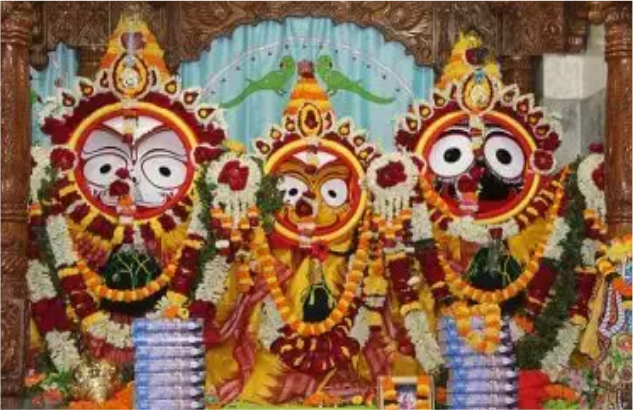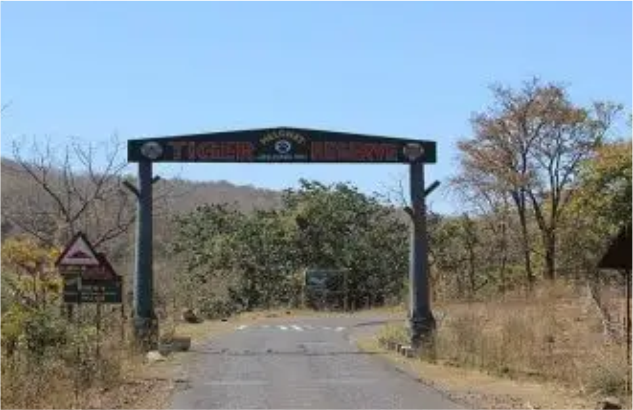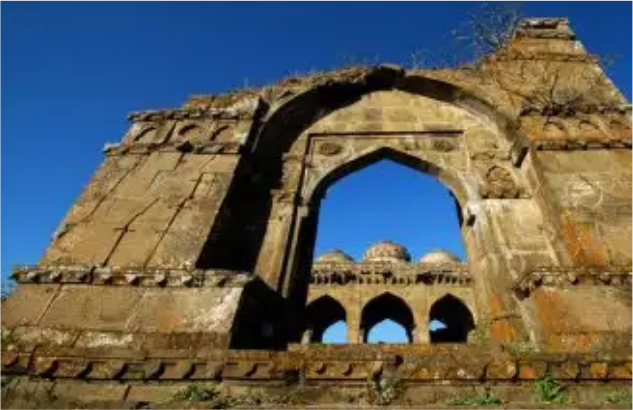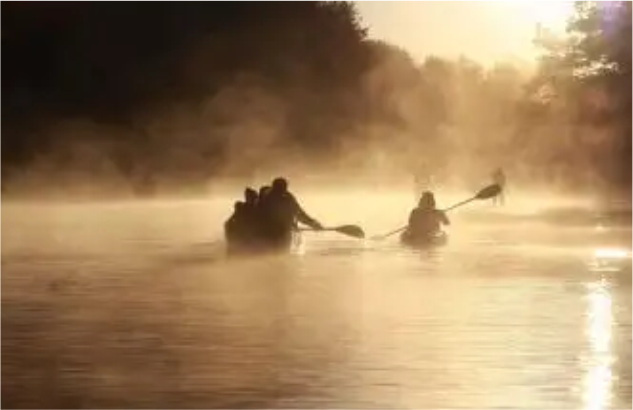Amravati
Introduction to Amaravati District
Amaravati District lies in the middle of Maharashtra, drawing visitors with its deep history, rich culture, and stunning landscapes. This overlooked area, often in the shadow of its well-known neighbors, mixes old traditions with new appeal. As you start to explore this fascinating place, you’ll step into a world where time seems to stop even as progress keeps moving.
Amaravati District takes its name from its main administrative center. This area showcases a mix of contrasts. You’ll see busy towns and quiet villages living side by side, each with a unique tale. The district’s scenery matches its cultural richness in variety. Hills roll, forests grow thick, and rivers twist, creating a beautiful setting for your explorations.
The Rich History of Amaravati
Amaravati’s past tells an interesting story that goes back thousands of years and covers many ruling families. The district’s tale starts in ancient times, with digs showing people lived here as far back as the Stone Age. When you follow history’s path, you’ll come across the lasting marks of strong empires that once controlled this area.
Amravati’s existence dates back to ancient times, with inscriptions found on the base of a marble statue of Jain God Adinath, set up in 1097. In the 13th century, Govind Maha Prabhu visited Amravati when the region was under the rule of the Yadavs of Devagiri.
In 1722, Chhatrapati Shahu Maharaj gifted Amravati and Badnera to Ranoji Bhosale, after which it became known as “Bhosle ki Amravati.” Ranoji Bhosale developed the city following his victories in Devgaon and Anjangaon Surji. The British General Wellesley camped in Amravati, a place still recognized today. Initially known as Udumbaravati due to the abundance of Audumber trees, its name evolved into Amravati.
By the late 18th century, the city flourished as a major business hub. In 1903, it became part of the Central Provinces and Berar, later joining Maharashtra in 1960 after the state’s formation.
Over the years, Amaravati saw many dynasties come and go, each one shaping the area’s culture and buildings in its own way. Now when you explore Amaravati’s towns and villages, you’ll spot traces of it’s long history. You’ll find old temples, forts, and dig sites that are just waiting for people to check out.
Tourist Attractions in Amaravati
Riligious Sites
Amaravati’s spiritual scene matches its cultural roots, giving both pilgrims and interested travelers the chance to check out many different temples and holy spots. Each of these sacred places has its own special vibe and tale, asking you to dig deeper into the area’s deep spiritual customs.
- Shri Amba Devi Temple: dedicated to the district’s patron goddess. This old temple, with its detailed carvings and tall gopuram, stands as a prime example of Dravidian architecture. As you join the crowds of worshippers saying prayers and lighting lamps, you’ll sense the strong feeling of devotion in the air.
- Ekvira Devi Temple: tucked away in the Chikhaldara hills. This out-of-the-way shrine honoring the goddess Renuka provides breathtaking views of the nearby valleys and a quiet setting to meditate and think. The hike to the temple itself serves as a spiritual journey twisting through dense forests and alongside flowing streams.
Forts
Amaravati’s buildings show how skilled and creative its old builders were. When you start your tour of the district’s buildings, get ready to feel amazed by how different and beautiful its landmarks are. From temples with detailed carvings to big forts, each building tells its own story about the area’s history.
- The Gawilghur Fort: It is another great building sitting on top of the Satpura range. This strong fort built in the 1100s lets you see both how people made military buildings in the Middle Ages and great views of the land around it. As you look around its broken walls and towers, you’ll sense the importance of history and think about all the fights that happened right here.
Natural Wonders
Amaravati’s natural beauty catches your eye, showing off many different landscapes that will amaze you. The district has something for everyone who loves nature or seeks adventure. You can explore the thick green forests of the Melghat Tiger Reserve or enjoy the calm waters of the Wardha River.
- The Melghat Tiger Reserve: This tiger reserve covers more than 1,500 square kilometers and stands out as a place with lots of different plants and animals. You should put it at the top of your list of places to visit. In this reserve, you can see the impressive Bengal tiger and many other types of plants and animals. When you go on a safari through the thick forests, look for leopards, sloth bears, and many kinds of birds that live in this protected area.
- Chikhaldara hill station: This is the only place in Maharashtra where coffee grows. When you walk through the green coffee farms, you’ll smell the fresh mountain air and see wide views of the nearby valleys. You can also go hiking in the Gavilgad and Narnala wildlife areas close by. These hikes let you enjoy the unspoiled beauty of Amaravati’s wild places.
Best Time to Go and Travel Tips
To get the most out of your Amaravati trip, you need to plan ahead. Visit the district in winter, from October to February, when the weather stays nice and allows for outdoor activities.
| Season | Months | Temperature Range | Notes |
|---|---|---|---|
| Winter | Oct-Feb | 10°C – 30°C | Best time to visit |
| Summer | Mar-May | 25°C – 45°C | Very hot; avoid outdoor activities |
| Monsoon | Jun-Sep | 20°C – 35°C | Heavy rainfall, some attractions may be closed |
Why Amaravati Should Be on Your Travel List
Nature’s beauty in Amaravati sets the stage for both thrilling adventures and peaceful getaways. You can explore the green forests of Melghat or unwind in the quiet hills of Chikhaldara. The local food will make your mouth water, and you can take home handmade crafts as souvenirs of your visit.
But the best reason to put Amaravati on your travel wish list is how nice and welcoming its people are. When you talk to locals, from store owners to people in villages, you’ll feel moved by how friendly they are and how much they want to share their way of life with you.
Travel Essentials
Here are the travel essentials one should know
Top Attractions
Discover the beauty and culture of Maharashtra through our curated experiences

Wadali Talav
Located near the Chandur rail road, the quaint suburban reservoir is a picture-postcard oasis for residents and travelers alike. Originally built to provide a supply of fresh water to the nearby neighborhoods, the water body is a perfect spot for weekend family picnics. Come for a relaxing setting, water-sports, sightseeing, or just to admire the quiet landscape set in nature.

Chatri Talao
Built in 1888, the Chatri Talao Amravati is nestled on a prime stretch of land, a heritage site that is also of great historical significance. Located at less than one kilometer from Dasturnagar Square, it shares the common goal of providing fresh water with Wadala Talav. Ranking high on the list of places to visit in Amravati, this glistering body of water began its journey with a small spring called ‘Kali Nadi.’

Ambadevi And Ekvira Devi Mandir
This religious Hindu temple honours Goddess Ambadevi, a divine deity worshipped across the state of Maharashtra. The timeless historic structure is standing tall for thousands of years. Devotees from all around the world flock the premise during high-standing festivities like the Navratri.

ISKCON – Amravati
For hundreds of years, Hindu believers found both a sense of belonging and spiritual connection in temples that celebrate tales of powerful deities. Located in Saraswati Colony, Rathi Nagar, it is a significant landmark and famous place in Amravati to visit with family and friends.

Bamboo garden
Stop into Bamboo Garden for an exhibition of India’s largest collection of bamboo plants with 134 species and a dedicated bamboo nursery. Established in 2017, the garden also surprises its visitors with an impressive selection of 300 species of cactus. This place makes a perfect weekend getaway for kids as they boast a 20 feet high sky-wall alongside many other fun activities available to enjoy on the premises.

Upper Wardha Dam
If you are looking to venture into the suburbs in Amravati to capture the local ambiance, make your way to Simhora town. It is a small establishment with a regional market with authentic food places and a view of the Wardha Dam. The straight gravity dam is gigantic and is a major water source for the city of Amravati. An interesting fact about the dam is that at its live capacity.

MelGhat Tiger Reserve
From several species of Indian bison to serpent eagles, the Melghat Tiger Reserve is one of the best places to visit in Amravati with your kids and family. There is an attractive variety of flora and fauna that one can explore in the reserve and the destination makes for a perfect day-trip from the central district of Amravati.

Gawilgarh Fort
The 300-year-old fortified structure sits on the north of the Deccan Plateau, a short trip from the Melghat Tiger Reserve, Amravati District, Maharashtra. This is a true reflection of the Maratha Empire and showcases some brilliant carvings from the period of the Nizams. Stroll around the landmark and observe the various scripts written in numerous languages.

Malkhed Dam
Malkhed Dam is an earthfill dam built on the Kholad river near Chandur. Rent a boat in the afternoon with a packed lunch and enjoy an outdoor meal with your family and friends. There is a nearby park for kids and a toy train that can be boarding for a short tour. The dam was originally built for irrigation and water supply but now ranks popular among the many must visit places in Amravati.

Chilkahrada Wildlife Sanctuary
In 1823, Captain Robinson of the Hyderabad Regiment decided to develop a tourist attraction in the region that could remind them of their homeland in England. Initially, the sanctuary was called Keechakadara Wildlife Sanctuary as it was believed to be the exact spot where Bhima, one of the five Pandavas killed Keechaka.


